The tiny cottage building guide is your road map for creating a dream modern cottage on your property to use as a source of additional rental income, a guest house, or mother-in-law quarters. Additionally, you can downsize and live happily in a smaller space while renting your big house for extra income.

Advantages of Tiny Cottages
Are you tired of feeling overwhelmed by the demands of modern living and dreaming of a simpler, more sustainable lifestyle? Imagine retreating to your very own tiny home, where cozy spaces and sustainable living blend seamlessly together.
In this ultimate guide, we will walk you through the step-by-step process of building a modern small house, from selecting the perfect location to picking a perfect house plan for optimal functionality.
With our collection of trending small cottage house plans, you can pick the best one for you. Additionally, you have the option to customize any house plan to fit your lifestyle.
Discover how lower property taxes and maintenance costs can make your dream more affordable than you ever thought possible. Join us on this journey towards creating your modern small space and start turning your vision into a reality today.
What is Cottage Style Home?
A cottage-style home is a small and pretty house that usually has a rustic and cozy feel. The goal of these homes is to be comfy and inviting, with design elements that show a simpler and more traditional way of living.
Tiny cottage-style homes are characterized by their compact size, efficient use of space, and charming aesthetic. These homes often feature cozy interiors that maximize functionality without sacrificing comfort.
From clever storage solutions to multi-purpose furniture, tiny cottage-style homes prioritize simplicity and minimalism to create a peaceful living environment. Embracing a mix of traditional and modern design elements, these homes exude a unique charm that sets them apart from other conventional houses.
What are The Traditional Cottage Elements?
These homes often feature the following architectural elements:
- Small footprint (around 500 sq.ft.)
- Cozy covered porches
- Exposed wooden beams in the interior
- Fireplace
- Gable-style roof with steep pitch
- Use of stone, brick, or wood in the exterior
What are the trending variations of a Cottage?
- Beach Cottage (features a more relaxed coastal design with light and airy interiors)
- English Cottage (features include thatched roof and timber frame)
- Storybook Cottage (often have whimsical and fairytale-like elements)
Trending Tiny Cottage House Plans (~500 sq.ft.)
Whimsical Tiny Guest House
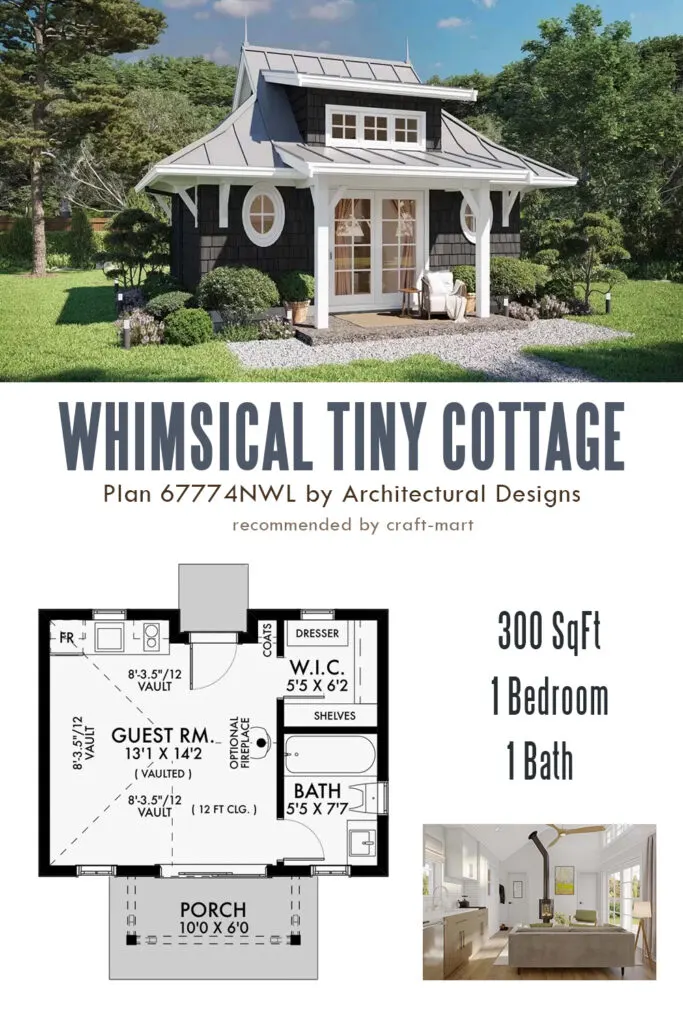
GET THE WHIMSICAL COTTAGE HOUSE PLAN HERE
Cozy Tiny House with Loft

Get a COZY TINY HOUSE PLAN HERE
Tiny Home for a Narrow Lot
Step onto the charming front porch and take a deep breath of fresh air. This inviting space not only serves as a serene outdoor escape, but also provides shelter as you enter the home.
The vaulted living room at the front of the house flows effortlessly into the kitchen, complete with casual counter seating for impromptu dining or socializing with guests. Perfect for a narrow lot!

Get a FLOORPLAN for a NARROW LOT COTTAGE HERE
Adorable Backyard Cottage
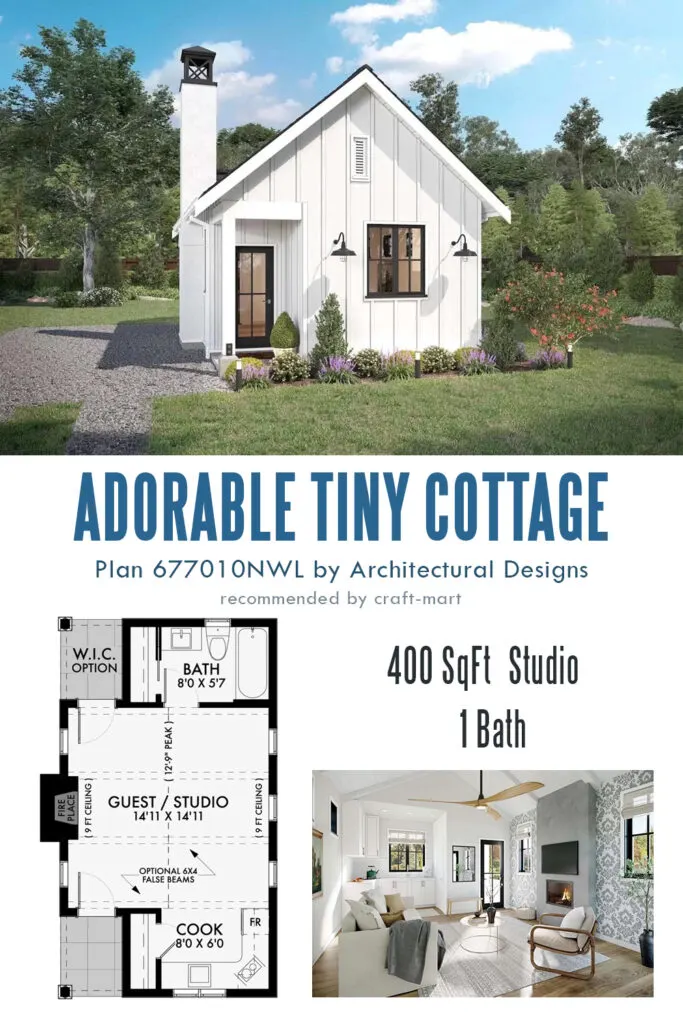
400 sqft ADORABLE COTTAGE HOUSE PLAN
Wheelchair-Accessible Tiny House

Get WHEELCHAIR-ACCESSIBLE COTTAGE PLAN HERE
476 Square Foot Modern ADU with Porch
Enjoy a simpler life in this tiny modern home. Whether you need a backyard escape, a guest house, or mother-in-law quarters, this 17′ wide house plan will fit any lot.
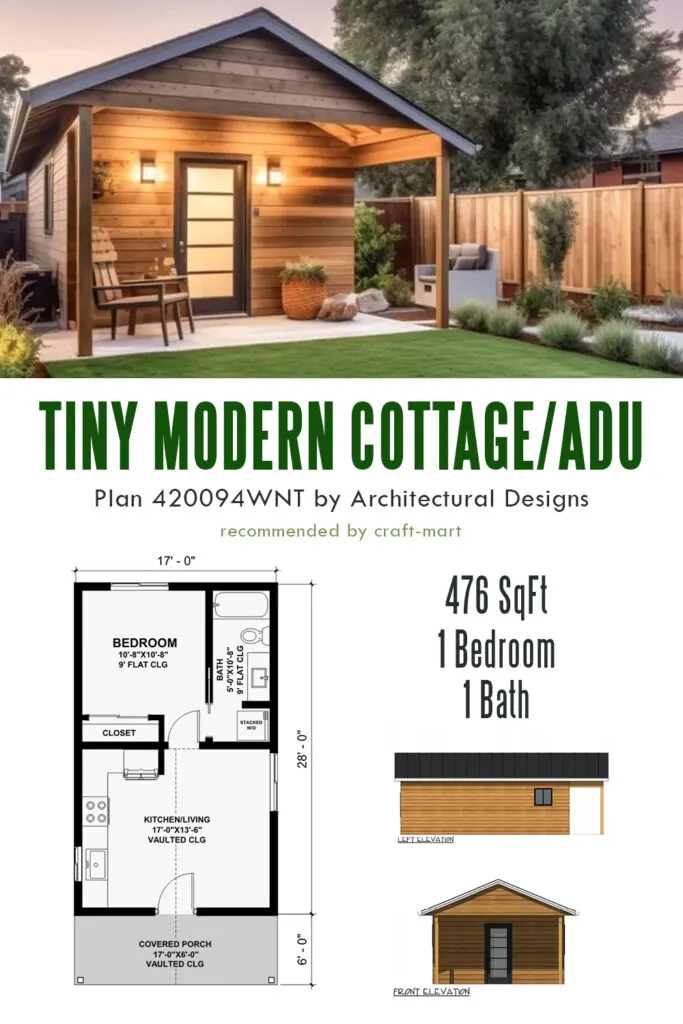
FIND this TINY COTTAGE HOUSE PLAN HERE
Tiny Cottage Studio with Shop
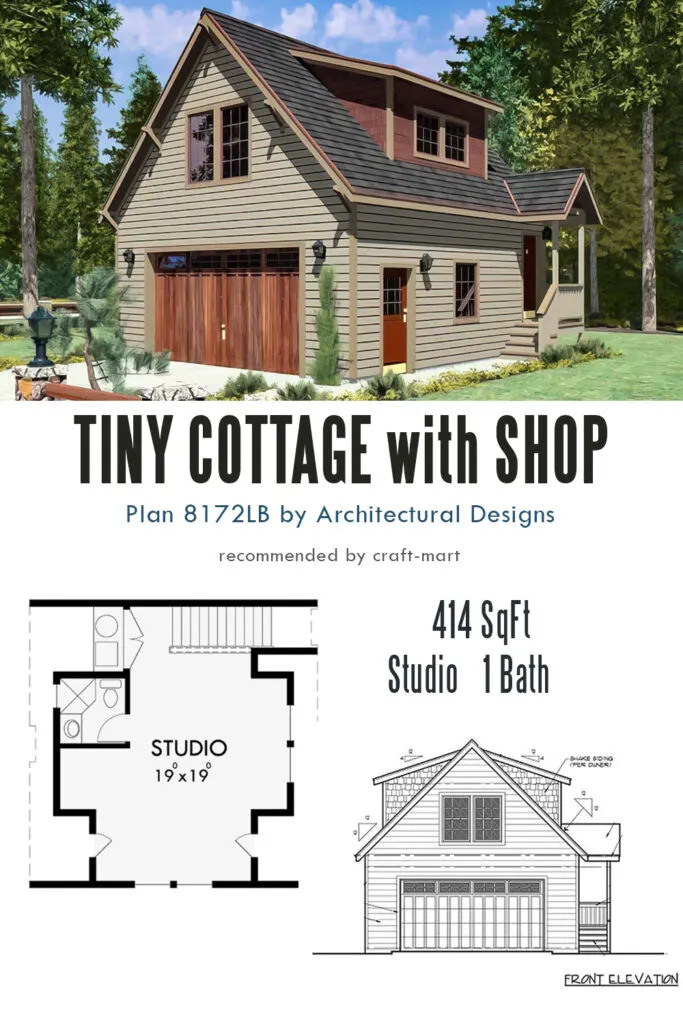
Get TINY COTTAGE WITH SHOP HOUSE PLAN HERE
Modern Cottage – 479 sq. ft.
Whether you are looking for a smaller primary dwelling or need a cottage-style ADU on your property, this modern home offers comfortable living with only 479 sqft of space. You can modify this floorplan by turning a half-bath into an extra closet for storage.
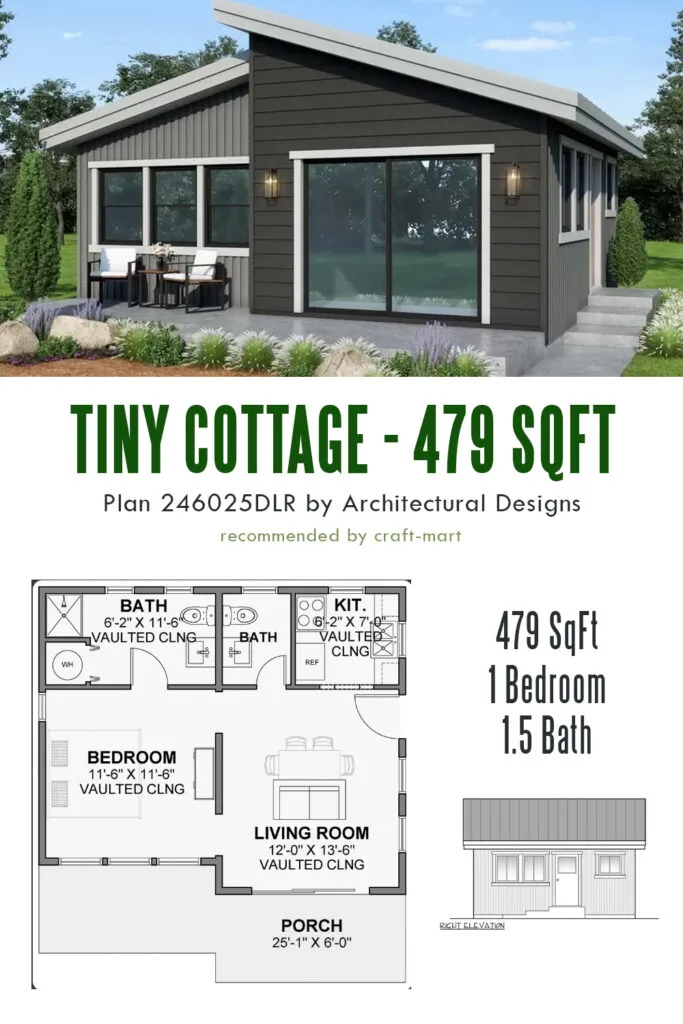
500 sqft Tiny Cottage with Blue Roof
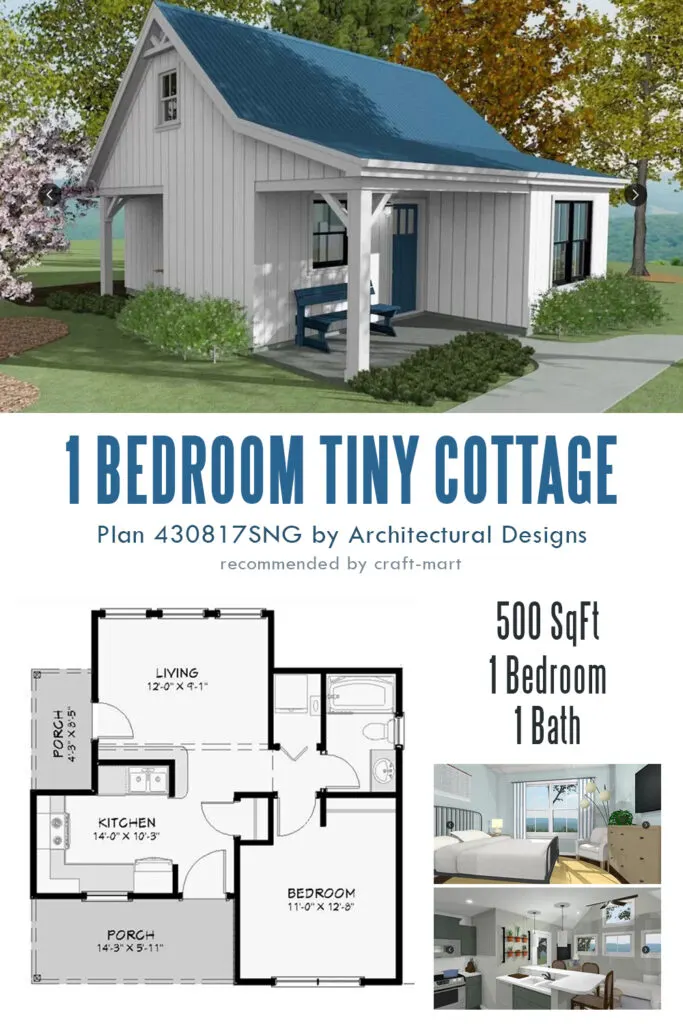
Get 500 sqft Traditional Cottage House Plan HERE
399 Sqft Modern Tiny Cottage ADU
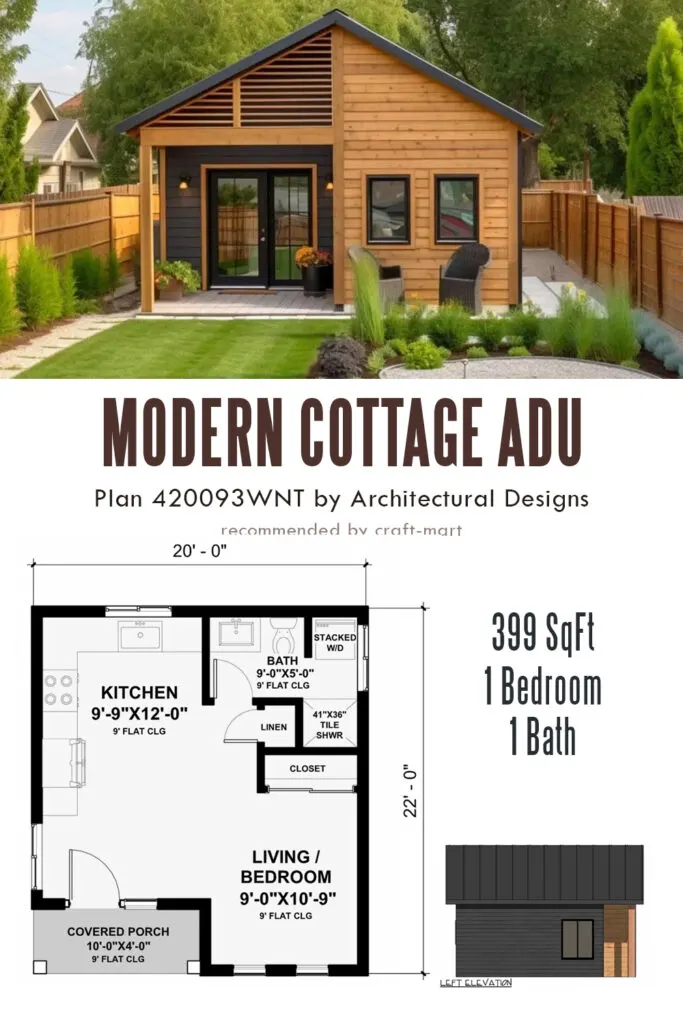
Get MODERN COTTAGE ADU PLAN HERE
Cottage-Style Apartment over Garage
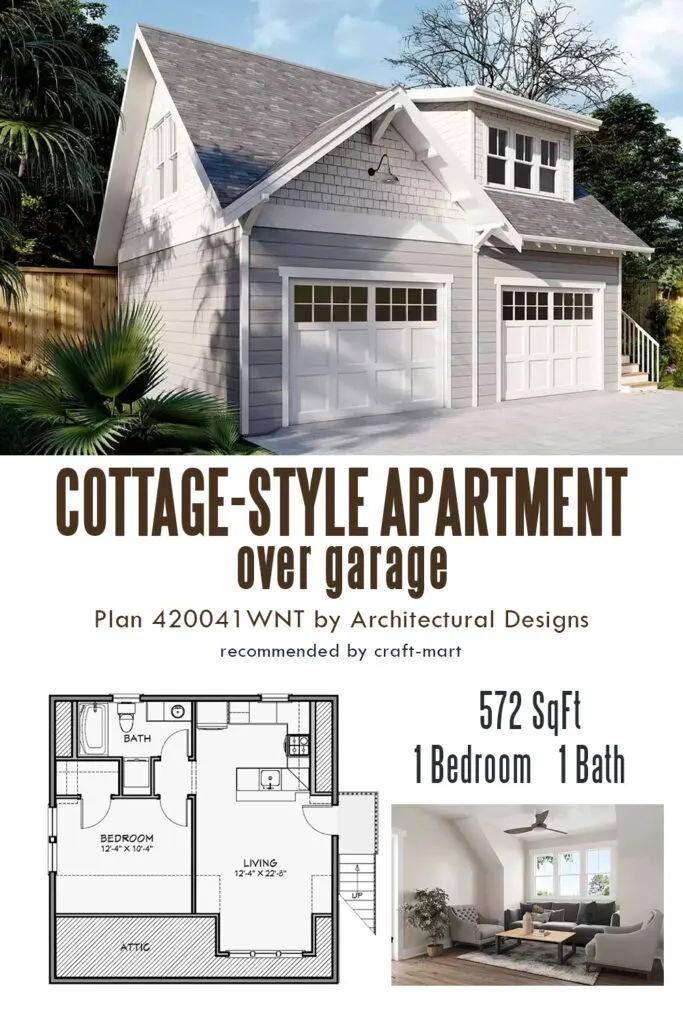
Get COTTAGE-STYLE APARTMENT OVER GARAGE PLAN
Classic Small Craftsman Cottage
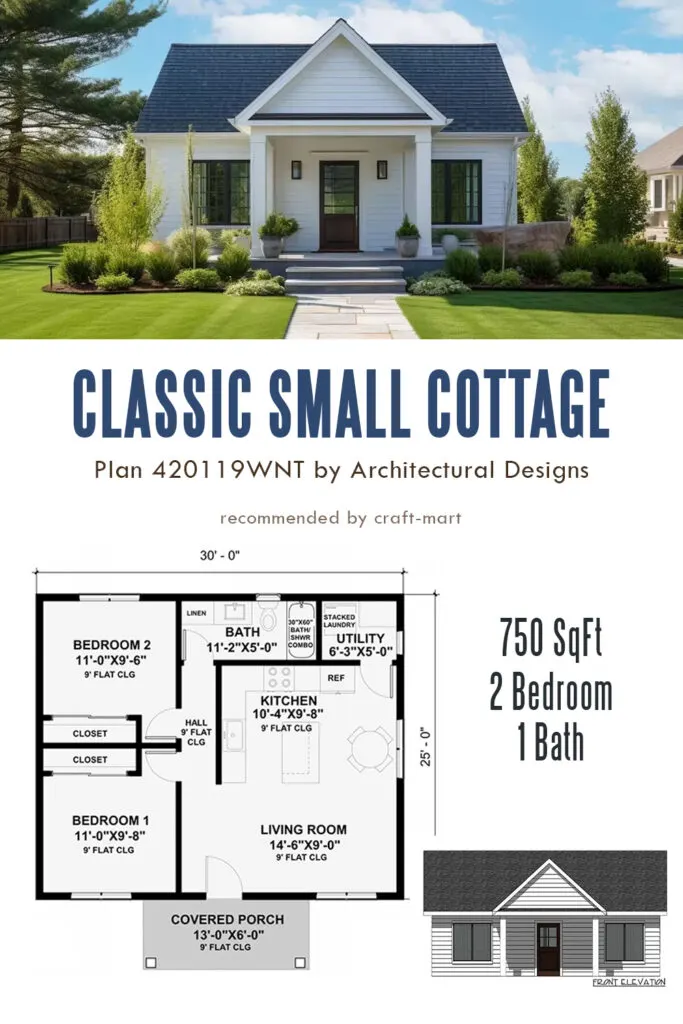
GET CLASSIC SMALL COTTAGE HOUSE PLAN HERE
Selecting the Perfect Location
Now, before we can concentrate on the construction process, it’s crucial to find the perfect location for your tiny cottage. The location you choose will impact your overall living experience and play a significant role in the property’s long-term value.
Whether you are buying a piece of land or utilizing space on the property you own, consult legal professionals and learn about zoning laws in your area. Most importantly, you want to ensure that your tiny cottage is constructed legally and with proper permits.
Once you have secured your ideal spot, we can move on to the next step – building a solid foundation for your dwelling.
Building a Foundation of Your Home
Before you can start building your tiny cottage, you need to focus on creating a strong foundation. The foundation is the backbone of your entire structure, providing stability and support for everything that comes after.
Without a solid foundation, your cottage may not withstand the test of time. Consider the local climate and soil conditions when choosing the type of foundation for your tiny home. Furthermore, find a local contractor and request a consultation.
Whether you opt for a concrete slab, pier-beam, or block foundation, ensure it is properly installed by a professional. Remember, a strong foundation is the key to a successful and enduring structure.
Designing the space for maximum functionality will be the next step in creating your dream tiny cottage.
Designing the Space of Your Modern Cottage
When designing the house plan and interior space of your tiny cottage, it’s important to prioritize functionality above all else. With limited square footage, every inch of space should serve a purpose and contribute to the overall flow and efficiency of the home.
Consider multi-functional furniture pieces such as a Murphy bed or a dining table that can be collapsed when not in use. Opt for built-in storage solutions to maximize space and keep clutter at bay.
Think about the layout of the kitchen, bathroom, and living areas to ensure a smooth and practical flow throughout the space. By carefully planning and designing the space for functionality, you can create a cozy and comfortable living environment that meets all your needs.
Financial Implications of Building a Small Cottage
Lower property taxes can also play a significant role in the decision-making process when building your own tiny house. Lowering your property taxes can be a major advantage of owning a smaller home, as they are often based on the square footage and value of the property.
This can result in significant savings over time and make owning a smaller home more affordable in the long run.
Make sure you consult your tax advisor and financial planner to help you in your decision-making process. Moreover, every state has its own property tax laws, and learning every aspect of them can be overwhelming.
Assemble the best team of professionals to guide you through the planning way before you start building your tiny modern cottage. Remember the mantra of real estate: location, location, location.
Lower Maintenance Cost
Another significant advantage of building a tiny cottage is the lower maintenance costs associated with these smaller spaces. Since they have less square footage and fewer amenities than traditional houses, the upkeep and repair costs tend to be lower.
This can result in savings on maintenance supplies, repairs, and professional services over the lifespan of the home.
By investing in quality materials and durable construction methods during the building process, you can further reduce maintenance costs in the long term. Additionally, the smaller size of your abode means less time and effort required for cleaning and organizing, making it easier to maintain a tidy and functional living space.
After all, you don’t want to be constantly cleaning your space. You want to relax and enjoy the view from your covered porch while engaged in your favorite hobby.
Lower maintenance costs are not only a practical consideration but also contribute to the overall affordability and sustainability of owning a small home. With careful planning and regular maintenance, you can enjoy the benefits of a cozy and cost-effective home for years to come.
In Conclusion
In conclusion, building your own tiny cottage is a rewarding and sustainable way to create a cozy home that fits your lifestyle. By carefully selecting the location, building a sturdy foundation, designing for functionality, and considering the financial implications, you can create a space that is not only affordable but also easy to maintain.
With lower property taxes and maintenance costs, a tiny space offers a practical and eco-friendly living solution. So take the first step today and start making your dream a reality. As you embark on this journey, remember that the smallest spaces often hold the biggest dreams.
